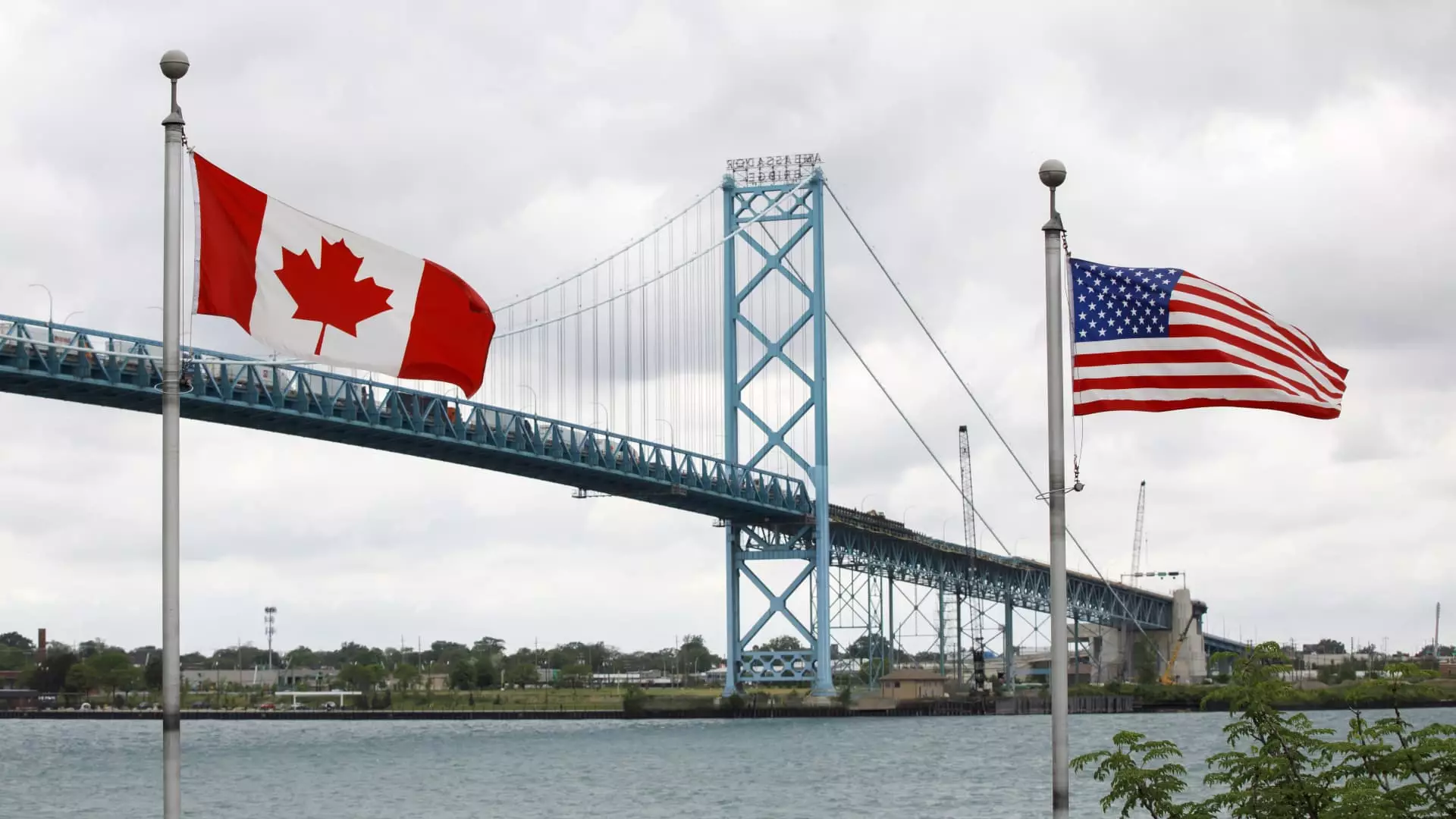As the specter of heightened tariffs looms over North America, the implications of President-elect Donald Trump’s proposed 25% levy on Canadian imports could reverberate throughout Canada’s struggling automotive sector. The stakes are particularly high for Ontario, the hub of Canada’s automotive production, which is heavily intertwined with the American market. This article delves into the potential consequences of such tariffs, focusing on job security, economic stability, and the intricate dynamics of cross-border trade, signaling potential long-term impacts on both sides of the border.
Trump’s proposed tariffs, designed as a measure to shield domestic industries, are set to strike a severe blow to both Canadian and American automotive workers. Tariffs function as taxes levied on imports, directly impacting production costs for automakers. Ontario Premier Doug Ford has been vocal in his opposition to these proposed tariffs, warning that they could decimate jobs not only within Canada but also across the U.S. economy. “It’d be terrible,” Ford stated unequivocally, emphasizing that the interdependent nature of manufacturing means that tariffs would inflate prices, reduce production volumes, and ultimately lead to job losses—a vicious cycle that would compromise thousands of livelihoods.
Estimates from analysts, such as those at Wells Fargo, highlight the stark financial repercussions these tariffs could impose. The costs of vehicles manufactured from Canadian and Mexican components could rise dramatically—exact figures indicate increases ranging from $1,750 to $10,000 per vehicle. This surge in prices may deter consumers from purchasing new vehicles, exacerbating an already fragile recovery within the automotive sector. As the industry grapples with its recovery from pandemic-induced disruptions, this added pressure could reverse gains made in the past year.
The automotive landscape in North America is not merely bilateral; it is a complex web of interdependencies among the U.S., Canada, and Mexico. In 2023, Ontario produced 1.54 million light-duty vehicles, largely for the U.S. market. Automakers from Ford to Toyota rely on a seamless supply chain that allows raw materials and parts to cross borders multiple times before they are assembled. Such collaborative production practices mean that tariffs could destabilize this equilibrium, leading to chaos in manufacturing operations that rely on just-in-time delivery models.
As highlighted by industry leaders, the consequences of disrupting this balance will affect not only Canadian workers but also American counterparts reliant on the same supply chains. Flavio Volpe, president of the Canadian Automotive Parts Manufacturers’ Association, succinctly noted that “the best tariff level for Canadian and American auto parts suppliers is zero.” Any increase could reverberate through the entire industry, with devastating effects.
Political Ramifications and Economic Tensions
The prospect of tariffs also interlays significant political implications for Canadian Prime Minister Justin Trudeau’s administration. Struggling to maintain public support amidst economic vulnerability, Trudeau faces intense scrutiny from opposition parties amid this escalating trade tension. Recent efforts by Ontario to launch a multimillion-dollar advertising campaign in the U.S. underscores the province’s urgent need to reposition itself as a crucial trading partner rather than as an adversary.
Furthermore, the current state of trade is characterized by a delicate balance of dependency; Canada is the U.S.’s third-largest trading partner, and any significant disruption to this relationship, such as a tariff implementation, could lead to a wider economic fallout. This mutual dependency casts a spotlight on the need for diplomacy and cooperation rather than divisiveness, particularly with pressing global challenges posed by trade with China and other nations.
Future Outlook: Navigating Uncertain Waters
The Canadian automotive industry, having endured decades of challenges, is gradually emerging from a protracted decline marked by the pandemic. Although there has been a resurgence in production numbers, ongoing trials, such as the transition to electric vehicles, pose hurdles that require thoughtful navigation. Automakers currently face transformative changes amid rapidly evolving market demands, and Trump’s approach on issues such as EV subsidies only adds to the uncertainty prevailing over the industry.
As industry experts, including David Adams, have pointed out, there is a palpable anxiety surrounding the lack of clear direction for the Canadian automotive sector. With the clock ticking on trade negotiations and the looming threat of tariffs, uncertainty risks spiraling into stagnation, which could adversely affect future investments and production strategies.
In the wake of potential tariffs, it’s crucial for Canadian and American leaders to prioritize dialogue over discord. By fostering a cooperative framework and addressing common challenges posed by a changing global trade landscape, both nations can work towards fortifying their shared automotive sector against external threats. As Ford aptly asserted, “We should be focusing on China and Mexico, not on its closest ally.” The road ahead must be navigated with caution, prioritizing mutual interests that strengthen not only the automotive industry but the broader North American economy as a whole.


Leave a Reply